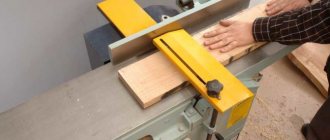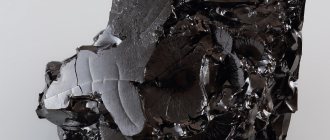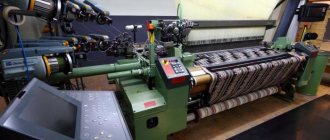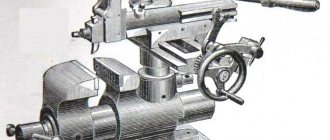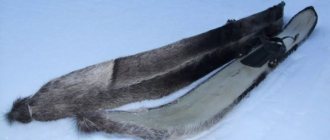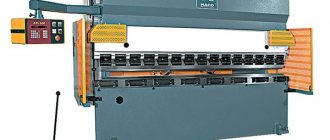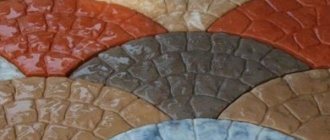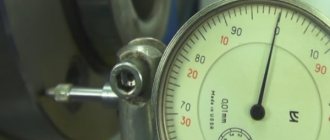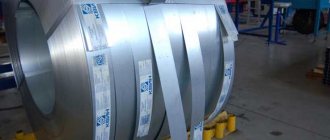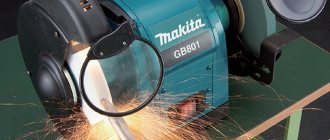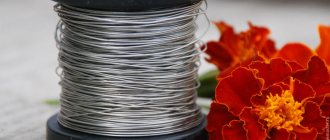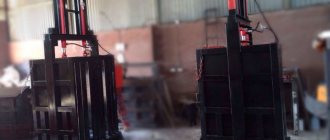Entrepreneurs in areas with forests and timber harvesting rightly believe that woodworking and carpentry can create a stable income as a business. Individual developers expect significant cost savings by purchasing small-sized, affordable woodworking equipment, for example, a machine for making lining.
The decision is quite reasonable, considering that processing wood into joinery increases its cost at least twice, and the use of wooden lining in cladding work is becoming an increasingly relevant and popular way of finishing housing and auxiliary buildings.
A machine for the production of joinery can be purchased, assembled from components for the planned volumes, and even manufactured independently.
Before you start selecting equipment or manufacturing it, you need a general understanding of the issue using the example of the industrial production of cladding boards.
Technology of industrial production of lining
The process of manufacturing lining on an industrial scale involves a number of preparatory and technological operations, a properly selected set of equipment, warehousing and storage of raw materials and products, and compliance with safety regulations:
- The wood (wisps) is cut into edged boards with a thickness of 15 to 25 mm and a width of up to 150 mm - the size is determined by the intended type of lining. Sawing is carried out on disk or band sawmills;
- Boards are brought to standard humidity in drying units, chambers and rooms in various ways. Drying is necessary to minimize waste, risks of warping and cracking of lumber;
- Upon reaching the required moisture content, the boards are sorted by quality; for the production of lining, the material is selected of the second or higher grade;
- A lining machine involves processing boards simultaneously in four planes to create a given profile. Sampling and cutting of wood occurs using cutters and knives of various shapes and sizes, usually replaceable and allowing different profile configurations to be varied;
- Finished products are inspected and then refined: large knots and wood defects are cut out. At the same time, the length of the lamella decreases, but its grade increases, and hence the selling price.
What technology is used to produce lining?
The technology for producing lining is not complicated, especially for those who are familiar with woodworking. The process is like this:
- Checking the quality of raw materials and their sorting.
- Drying wood.
- Planing the front side of the board.
- Folding and tongue-and-groove products.
- Rejection of low-quality products.
- Packaging of finished lining into classes.
The finished material must comply with established standards - GOST 8242-88. But many enterprises today operate according to their own specifications, which makes it much more difficult for consumers to choose.
A standard lining production line makes it possible to benefit from products of classes A, B and C. Product distribution is carried out based on whether the lining has any defects, knots or mechanical damage. But no matter what class the lining is assigned, it should not contain wormholes or traces of fungus.
Conditions and requirements for the production of lining in small volumes
Based on the principle of a large-scale industrial enterprise, mini-productions of facing boards are also created.
Basic conditions:
- The production premises must be separate and comply with sanitary standards;
- The noise of the machines should be minimal, especially if the mini-workshop is located in a building with nearby people living;
- Wood dust is an increased source of ignition, which must be taken into account when organizing production;
Depending on the power of the equipment and machines, unforeseen loads on the electrical wiring may occur; the wiring must be calculated with a reserve.
Whatever machine is used for making lining, the basic requirements must be met:
- The board in production should only be edged, the dimensions of the thickness and width of the boards should be the same;
- In addition to the main machine, it is necessary to have a double-sided surface planer or, at a minimum, a jointer in the equipment set;
- Be sure to pass the wide planes of all boards through a surface planer on both sides;
- The humidity of the blank board should not exceed 24%, otherwise it must be dried under a ventilated canopy.
Advantages of wood lining
Wood is widely used in all industries. Wooden products have become widely used. Wooden lining is used in construction for finishing work.
The advantages of wood products are:
- High strength;
- High thermal insulation;
- Increased heat resistance;
- Durability;
- Electrical insulating ability;
- Naturalness;
- Environmental friendliness;
- Aesthetics.
A special advantage of wood is the manufacture of lining at home.
Making the lining with your own hands is carried out in the following order:
- Choice of wood species;
- Determination of product sizes;
- Equipment selection;
- Manufacturing of lining.
Difficult work on a simple machine
Various recommendations for novice carpenters and machine operators claim that making lining or other wood products is simple and accessible to any beginner.
In practice, it is somewhat different: carpentry work is complex by definition, and with the use of machines and special tools it is also dangerous. First, you need to study, at least in a minimal way, the theory of wood processing: direction of fibers, types of joints, grade, hardness, curl, defects and defects.
The simpler the woodworking machine for lining, the more user intervention is required to configure it and set parameters.
A general familiarization with the operation of the machine must be completed by first observing the work of the master and recording even minor nuances of installation and adjustment of knives, cutters, fasteners and protective devices.
A machine for making lining is a profitable business
A milling machine appeared in the home workshop, and all volumes of production of profiled wooden cladding for our own needs have been completed. The question arises - why should the equipment be idle? After all, now you can organize your own business for the production and sale of finished products to the public.
Any business aims to make a profit. To determine the profitability of your business, you need to have a rough business plan. Using the Internet, you can analyze the following data:
- cost of 1 m3 of unedged board = 5000 rubles;
- electricity consumption – 10 kW/hour. = 5.38 x 10 = 54 rubles;
- sale of homemade lining – 1 m3 = 8,000 rubles.
- profitability of manufacturing 1 m3 of wooden cladding = 8000 – (5000 + 54) = 2946 rubles.
You must understand that this business plan represents an approximate calculation of income from this type of activity. It is necessary to take into account the payment of taxes from self-employment and many other small expenses. Profitability must be determined on a case-by-case basis.
The main thing is that a homemade machine will always be a useful aid in running a garden and household, and will also be able to generate profit.
Preparation of the workplace
All the time, attention is paid to the work of the saw, so nothing should interfere with the process underfoot or on the table with workpieces. Finished products are neatly stacked on the opposite side of the workpieces. The simplest version of the lining machine is not intended for independent work with long workpieces.
It is very difficult to independently hold the board as it exits the cutter while pressing tightly against the ruler; there is a real danger of injury due to a violation of linearity at the ends and the need for additional effort.
Operating principle of the machine
The lining manufacturing process includes processing the workpiece from four sides. First of all, the board goes through circular saws, which create smooth edges. Next, the thicknesser calibrates the workpiece. The last stage is milling, as a result of which chamfers and connection elements (tenon and groove) are formed.
In principle, all these actions can be performed on different machines, but this is inefficient. It is much more reasonable to use one machine, which will allow you to get a completely finished product at the output, moreover, in one pass.
The operation of this machine is possible thanks to the simultaneous installation of several (4 to 7) spindles on one tabletop. By adjusting the distance between the saws, it is easy to determine the geometric dimensions of the resulting board, changing the cutters, and flexibly adjust the profile of the product.
Manufacturing enterprises use powerful machines with working surfaces up to 12 m; for making lining at home, you can choose a portable device. At the same time, the power of a small household machine is more than enough for the needs of routine repairs.
Machine equipment
It is possible to assemble a lining machine from individual components only if you have the necessary technical skills. Components of the machine for home use:
- Bed: is a heavy frame with high stability and the center of gravity located at the bottom of the frame;
- Table for supporting lining made of solid steel plate with holes for cutters and spindles;
- Motor up to 5 kW with transmission from 5000 rpm to improve planing cleanliness;
- Pressure rollers to hold the workpiece in the required planes;
- Knife shaft;
- Protective cover for rotating parts;
- Switching unit with external button;
- Grounding and protective metal hose for electrical wiring.
Components of a homemade machine
You can make a machine for the production of lining yourself, but you must take into account that it has a complex design. You can take on such work only if you have experience and relevant knowledge.
Drawings of a simple machine for a home workshop are easy to find on the Internet. Structurally, it consists of several main devices assembled on a common frame.
Requirements for the design of a machine for the production of lining
- The standard height of the working surface of the table is 800 mm. The workshop owner can change this size according to his height.
- The table surface is made of polished material. This will ensure easy and unhindered movement of the wooden workpiece. Usually the tabletop is made of polished steel or aluminum sheet. Sometimes, MDF sheets are used to cover the table, but in this case the tabletop quickly wears out with intensive use. The machine can be covered with textolite.
- The power device consists of an electric motor equipped with an elevator lift. Often a manual router is installed, which is already equipped with an elevator. The head of the router axis must be adapted to change cutters of different sizes.
- A nozzle for suctioning wood dust must be installed in the work area. Accordingly, the nozzle is connected with a hose to the vacuum cleaner.
- From the bottom of the table, the router is attached to a mounting plate installed on the underside of the table top. The maximum offset of the cutter above the work table surface largely depends on the thickness of the plate.
- Pressing devices (parallel, cross stop and pusher) must protect the operator’s hands from accidental contact with the cutting surface of the cutter during operation.
We recommend: How to putty a ceiling for painting - instructions for beginners
bed
The frame of the machine is a massive steel structure, which ensures stability and reliability of fastening of all components and assemblies. The bed must be stationary; for this, its center of gravity is located as low as possible. The components of the frame are connected to each other by welding.
Tabletop
The best material for a homemade machine table is a polished steel plate. Technological holes are made in it for the exit of the cutting tool, and stops are installed on it. The tabletop is made narrow and elongated; its task is to support the workpiece during processing.
For a small machine, the tabletop can also be made from wood-based sheet materials. Laminated boards or thick plywood are suitable. It is best to cover such a structure with metal or cover it with durable plastic.
Engine
All rotating devices are driven by an electric motor. Even for a small machine, its power should exceed 2 kW. The transmission of rotation is carried out using belts. To operate effectively, different cutting devices require different rotation speeds; this is achieved by using pulleys of different diameters.
Clamping mechanism
The purpose of this mechanism is to accurately orient the workpiece and hold it during processing. It is implemented by a set of rollers mounted on the tabletop. They are made removable, which allows the machine to be used for making boards of various widths.
Cutting tool
Circular saws and cutters form the profile of the product at the exit. The quality of the resulting lining depends primarily on the quality of this unit. By changing the cutting tool and its parameters, you can configure the machine to produce various products.
When creating a homemade machine, it is important to ensure the safety of its operation. All rotating parts must be covered with metal covers. The on/off unit must be located in close proximity to the operator. The off button should be red, easy to press and under no circumstances be recessed into the switch body.
Machines: popularity and availability
For the production of cladding boards in small volumes, the most popular, easy to use and affordable machine is considered to be a four-sided machine for making lining.
It can be used to produce high-quality eurolining with complete product readiness in one pass. In addition to lining, it is possible to produce skirting boards and platbands.
Basic selection options:
- Workpiece feeding speed;
- Machine weight;
- Possible type of lining section;
- Power;
- Number of spindles.
Types of wood for making lining
To decide what material to make the lining from, you need to study the characteristics of the types of wood. Whatever the quality of raw material processing, the finished product will have the same quality. Boards for lining are made from deciduous and coniferous wood.
Hardwood
Linden
According to its properties, linden is classified as a soft wood. Boards made from this material are very light and easy to process.
Birch
Birch blanks are easy to make lining. Birch has moderate hardness, uniform density, and is easy to process. Because of its textured surface, birch is preferable in the manufacture of lining for cladding walls indoors.
Alder
Softwood is used mainly for making furniture. Alder in the form of lining has proven itself to be excellent for finishing walls in bathhouses and in rooms with high levels of humidity.
Aspen
Softwood contains a small amount of knotty inclusions. Aspen boards are resistant to deformation and retain their strength properties in a humid environment. The quality of the lining made from this material is very high.
Conifers
Spruce
Wood is widely used in construction. Spruce boards are a priority raw material for the production of lining. Spruce is a universal wood - easy to saw, drill and mill.
Larch
Larch has all the qualities of spruce. Do-it-yourself lining is used mainly for cladding walls inside the house.
Pine
Cladding made of pine lining has a long service life and practically does not lose its original appearance. Like all types of coniferous wood, at high temperatures it can release tree resin. Therefore, pine needs to be painted or coated with moisture-resistant varnish.
It should be noted that there are a large number of wood species. The above list shows those types of wood that are most accessible and suitable for making lining.
Professional advice when choosing a machine
All machines are designed for material with standard humidity. If you have a choice of machines that are approximately equal in their main characteristics, you can pay attention to the signs that determine the best model for a not very high-quality source material, including resinous:
- Feed-pressure rollers along the entire length or distributed feeding;
- Lubricant is supplied to the table continuously;
- The presence of driven counter rollers under the frame with the ability to adjust the height;
- High, sharp, spiked profile of the rollers.
How to make a lining from an edged board
Master class from the YouTube channel “ Samodelkin ”.
Choosing edged boards
In a home workshop, it is not possible to make lining from every edged board. For this, as a rule, 1st or 2nd grade lumber with dimensions of 100x25x6000 mm is used. This is a standard board size that is in demand at all stages of home construction.
There are certain requirements for edged boards for lining. The lumber must have natural humidity, but not more than 16%. The boards should not have mechanical damage, signs of rot or wormholes.
Cinder board for lining
The type of wood for the lining is selected depending on what will be sheathed: the outside of the house, the interior, the bathhouse. For homemade lining, inexpensive types of wood are usually used, which are often found in the retail chain:
- pine - pronounced texture, high strength, good thermal insulation properties;
- spruce - light texture, a large number of knots, easy processing, does not warp, not moisture resistant;
- alder - the texture has many shades, high moisture resistance and thermal insulation;
- linden - beautiful texture, easy processing, resistance to temperature changes.
Making lining with a milling cutter
First of all, the edged board, processed on a jointer, is planed with a thicknesser. With its help, the geometric dimensions of the future lining are formed.
Processing boards on a thickness planer
The edged board can be processed in another way. For example, it is enough to go through it with a plane and then sand the surface.
Before milling, the ribs of the workpieces are planed, and the wane is removed with a sharp knife.
Removing the wane
Since the surface of the boards is rough after the thicknesser, they have to be sanded.
View of boards before milling
For milling, a manual milling machine with a power of 2100 W is used.
Manual frezer
The profile is milled using combined cutters included in a set of two cutters. If you use separate cutters, the work will take much longer.
Milling profiles
The set of cutters is suitable for processing wood of all types. The set contains one large-diameter cutter, which forms a joining tenon, as well as an edging on the front part of the workpiece. A smaller diameter cutter forms the joint groove and edge on the other side of the board.
Set of cutters
The cutter for the docking tenon is clamped in the router spindle and the milling depth is selected.
Installing the cutter on the router
Install the parallel stop included in the router kit.
Assembled router
To facilitate the processing of edged material, the boards are laid on racks with the wane down. A special rail holds the board and prevents it from moving during milling.
Holding the board on stands
The first cut is made using a milling cutter to create a joint tenon. This cutter is used to process all the boards one by one. The back and front sides of the treated boards have different appearances.
Back side of the treated board Front side of the treated board
On the router, they change the cutter to a docking groove, and make cuts on one board that has a docking tenon.
Sawed groove of the lining
Check the correct installation height of the cutter for the joining groove by checking the presence of a gap between the two joined linings.
If the cutter is installed incorrectly, there will be a gap after joining. It is enough to recess the cutter and the gap will disappear.
Gap in the boards after joining
After adjusting the installation height of the cutter, all remaining boards with tenons are milled into the joint groove.
The quality of the lining made by a milling machine is assessed by the assembled panel.
The front part of the panel made of liningView of the panel from the side of the wane
Before installation, the lining is stored indoors. If you leave the material outside, it will move and the slats will be unsuitable for cladding.
The lining, made by a milling cutter, is distinguished by a reliable lock.
Castle view
This material is used for cladding not only indoors, but also for cladding the exterior of the house.
Popular brands
There is high competition in the wood processing machine market and a diverse range of models according to purpose, characteristics and prices. Russian machines are not inferior to imported analogues and are often offered at more affordable prices.
Start 160
The machine for the production of lining of the Russian brand is just gaining popularity, but already has a number of qualities that are superior to competitors in its niche:
- Quick adjustment of the dimensions of the facing board during operation;
- The speed of rotation of the spindle guarantees high quality of the product;
- A powerful gearbox ensures reliability and accuracy of products;
- High protection system;
- The precision of the grinding process eliminates tool runout.
BEAVER
Chinese four-sided machines from BEAVER have been sold on the Russian market for quite a long time and successfully. The manufacturer constantly modifies the models and confirms their high quality.
All models are highly productive: the material feed speed is 60 m/min without loss in product quality. In addition to the production of lining, calibration of small parts is available.
HASKOVO
The machine for the production of lining from a Bulgarian company is easy to operate, some models are equipped with five spindles. Produced in Bulgaria and Austria, it has a good reputation in the European market.
Available for work without special training.
QUADRO
The experienced Taiwanese manufacturer is represented on the Russian market by a large number of models with individual, diverse differences.
For serious manufacturers, a machine has been designed for the production of lining with a maximum material feed speed of 190 meters per minute.
Start-160
Start-160 is a representative of the domestic machine tool industry.
Another unit with an affordable price and wide functionality, which any novice master will appreciate. But this time it is domestically produced.
Specifications:
| Parameter | Meaning |
| Allowable blank width | 3-16 cm |
| Permissible blank thickness | 1-6 cm |
| Minimum blank length | 50 cm |
| Speed capabilities of the feeding mechanism | 0-30 m for 60 seconds |
| Number of revolutions made by the spindle | 5800 for 60 seconds |
| Total equipment power | 16700 W |
| Number of spindles | 4 |
| Weight | 0.7 t |
| approximate price | 330000-360000 rubles |
Advantages:
- Stepless adjustment , allowing you to quickly change the size of the product;
- High gearbox power , ensuring the reliability and accuracy of the manufactured lining;
- Backflow protection system for
The machine as the basis for business production planning
As an approximate business calculation, you can take the Start 160 machine, as the most affordable with sufficient productivity and good technical indicators of the quality of finished products.
A four-sided machine for the production of lining “Start 160” currently costs 350 thousand rubles, the price can be considered loyal.
Calculations
The productivity of the machine should be planned according to the average speed of material supply; for this model it is 10 m/min or 1 m2 of finished lining per minute, which is about 500 m2 of finished products over an 8-hour work shift. With single-shift operation 260 days a year, the gross volume of production will be 130 thousand m2. In monetary terms, at a price of 150 rubles. per 1 m2, gross income will be 20 million rubles.
There is no point yet in making complex detailed calculations indicating all the components of product pricing, but, with an average profitability indicator, the amount of net income will be about 4 million rubles.
Even if this figure is halved, we can say that a business producing lining can bring good profits.
The costs of a lining machine, as the main equipment, according to average statistical data, make up a quarter of the costs of organizing a business.
With this averaged approach, it turns out that the payback period for the machine will be about a year.
Optional equipment
To accurately calculate a business plan, you need a lot of additional data and specific numbers.
In terms of equipment, for work, regardless of lumber suppliers, it is necessary to add a drying chamber for wood blanks to the machine kit.
A band sawmill with a performance matched to the characteristics of the main machine will help completely eliminate the influence of suppliers on the rhythm of production.
The cost of purchasing a dryer and a sawmill is approximately equal in cost to the main machine each.
Approximate calculations allow us to draw a preliminary conclusion about the profitability of the business. The machine for making lining in these calculations acts as the basis of the business, the starting point for other indicators.
Rules for the sale of finished products
The production of eurolining is a widespread business. And for sure this niche in any of the regions of Russia is already represented by several large manufacturing companies. A novice entrepreneur will have to make remarkable efforts to win a place in the market.
You can make your presence known in the consumer market through advertising. And the main advertising platforms that will promote the production of eurolining will be:
- Outdoor advertising.
- Advertisements in newspapers.
- Distributing leaflets in construction stores.
When developing a marketing policy, you can also use the Internet. But you shouldn’t invest a lot of money here - the “return” will be small.
A home machine will not be able to provide quality products to many customers. Large quantities of goods can only be obtained using a powerful automatic line. Therefore, when agreeing on cooperation with one or another wholesale buyer, it is necessary to look at things realistically - will it be possible to fulfill orders?
The products that the sawmill for lining and the milling machine produce at the output can be offered:
- construction companies,
- construction stores and bases,
- private clients.
It will be difficult to find profitable clients, and therefore this should be addressed in the first stages of drawing up a business plan.
This is interesting:
Business idea: production of pallets.
How to open your own decking board production?
We are launching a small production of chipboards with our own hands.
